How Long Does it Take to Travel Through Europe
How Long Does it Take to Travel Through Europe
You have probably heard about how long to travel through Europe. If you are going to plan a European tour, then knowing how long to travel by plane would be helpful. Knowing this information would prevent you from getting lost or ending up in a place that you do not want to be in while you are on vacation. Here are some tips for long distance travel in Europe.
How to Travel Around Europe
How long to travel through Europe depends on your route and the time of the year. There is no set rule for how long to travel through Europe by plane. The best idea is to get a good idea of how long to travel by plane so you can make a decision about which route to take first. If you are traveling to see Europe, then there are different ways of getting there. The easiest and fastest way is through using an air plane or train.
Travelling Europe by Car
Some people choose a road trip to see Europe. This can be a great way to explore Europe because you can take in the culture along the way. It also gives you time to see the sites along your route. However, these trips can be expensive and long. Knowing how long to travel through Europe by road may help you save money when you are planning your vacation.
A trip around Europe in a car can be rather fun because there are so many interesting sites along the way. You can drive from Portugal to the Netherlands and from there, you can see Germany, Belgium, and other European cities.
Travelling Europe by Plane
If you are a traveler who wants to see Europe by plane, there are many routes available. This includes London to Paris and back. This way of traveling can take two to three days. You can make hotel accommodations and then fly during the day and then stay overnight in the hotels. These ways of traveling can be very interesting and are often the most preferred way of traveling to Europe.

Grand Canal in Venice, Italy, Europe
Travelling Europe by Train
If you decide to use a long distance train, then you need to know how long to travel through Europe. Train rides can take several days and then you have to return the trip. There are also several rail companies that go from one country to another. You may want to do some research to find out which trains will be the best for you and your trip.
Travelling Europe by Sea
Of course, if you are a person who likes to enjoy the sea, you can always take a cruise ship across the Atlantic Ocean. There are two ways of going about this: via air or via land. Air traveling is faster but can be exhausting. However, if you are looking for a relaxing way to get away from it all, then taking a cruise ship across the Atlantic Ocean is the way to go.
Other ways to travel through Europe include through renting a car or traveling on a bus or train. The most popular ways to travel across Europe are by train and by plane. However, if you are feeling particularly adventurous, you can always rent a car. Another option is to use the various means of transportation offered in each country. There are several ways to travel through Europe and no matter what you ultimately decide on, the time you spend there will be more than worth it.
So, What is the Best Way to Travel Around Europe
In order to see all of Europe, you need to know how long it is going to take to get from one place to another. The longer the distance you need to cover, the longer your itinerary will be. If you are going to travel by plane, then you have a few different options. The first is to either fly into a city of choice or to a smaller city nearby. This is good if you have a few days or short stops between destinations. You can also consider connecting through any cities that are nearby, as well as through London, England.
When it comes to traveling by rail, you have three different ways to do so. One way is through Transfereaus, which are essentially a sort of rail conveyor belt. Another is through Eurostar trains, which connect London with Paris and Brussels, among other cities. Finally, you can take a long cab from any city to another. No matter which route you choose, these long distance by rail services can get you from point A to point B very quickly.
Of course, one of the best ways to travel through Europe is through air. With direct flights from most major cities to most major European cities, there is no question how long to travel through Europe. However, while they do offer some discount tickets, they can be prohibitively expensive. There are many budget airlines that fly from major destinations such as London, Amsterdam, Paris, and Rome to many of the places in Europe, and while they may be more costly than a direct flight, there is still a great selection of options when it comes to long distance by air travel.
Lastly, be sure that you have your travel insurance with you because you don’t know what will happen while you are on your vacation.
Europe Border Crossing By Car: The Ultimate Preparation Guide
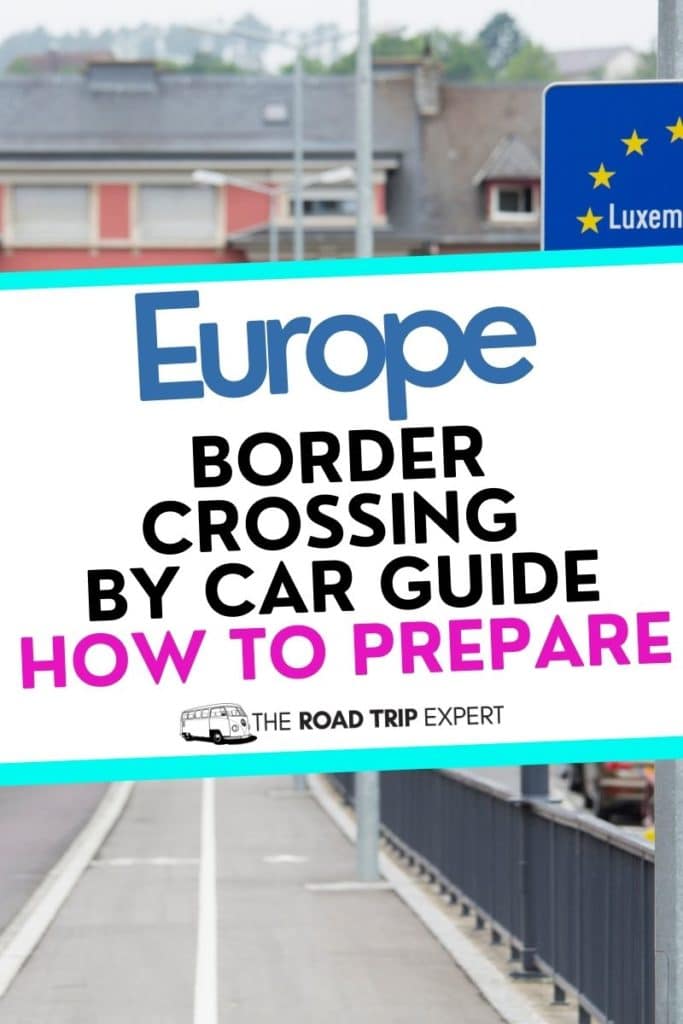
In this guide, I am going to explain everything you need to know about a Europe border crossing by car.
In fact, this is everything I learned whilst driving over 20,000 km around Europe in a KIA Sportage SUV.
Europe is an exciting place to enjoy a road trip. There is huge diversity in the landscapes and cultures your will encounter. Driving is an excellent way to experience it.
Read on to learn about all the documentation, preparation, and costs associated with driving across borders in Europe.
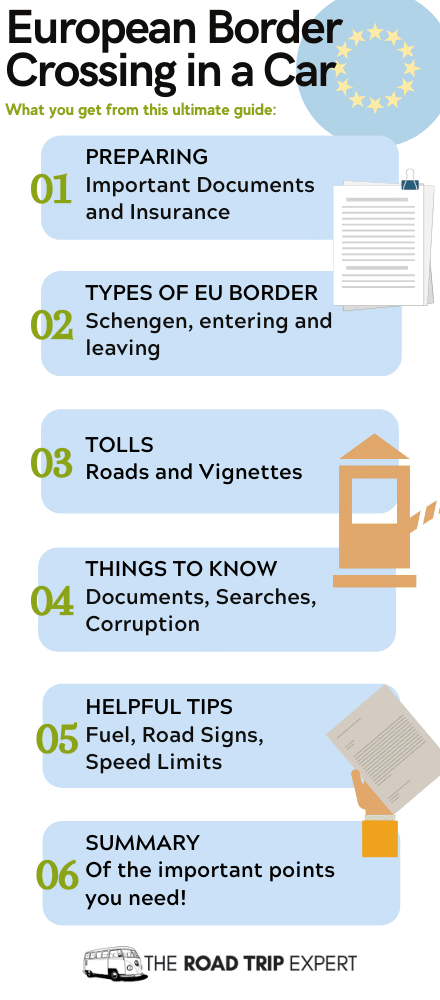
Preparation For Driving Across Borders In Europe
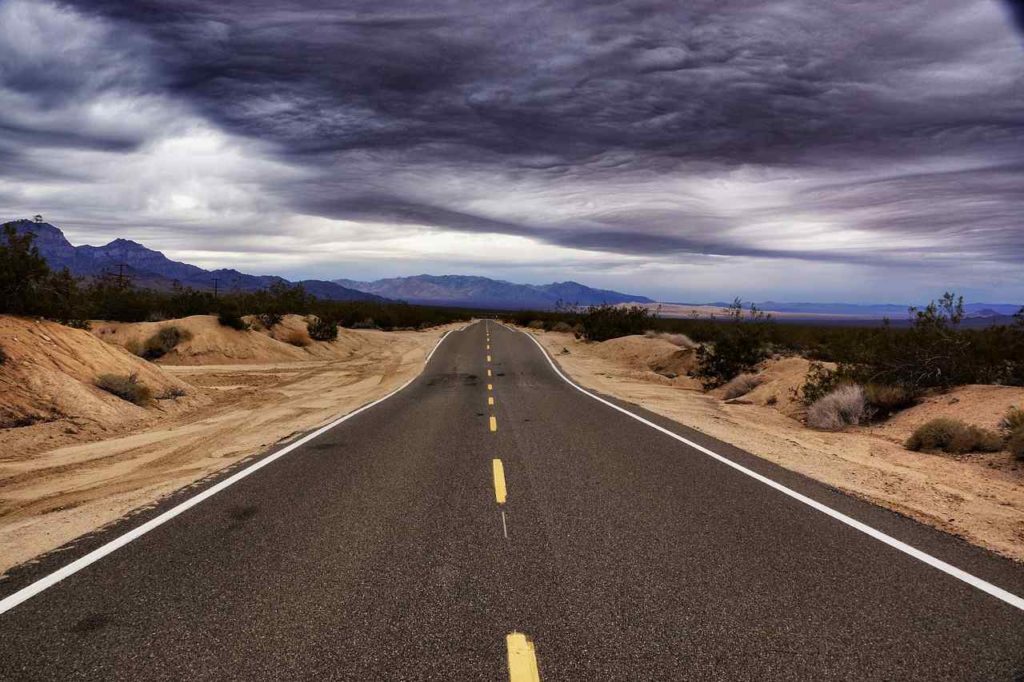
The key to successful border crossings in Europe by car is research and preparation.
You will face a hard border crossing when entering/leaving Schengen or crossing the border between non-Schengen countries.
Read on to find out exactly what you need to when driving across borders in Europe. Something that is for sure is that you want to make sure you know what the best route is. I would suggest checking out our article explaining our view on the best route planner app out there..
Documents you need for a Europe border crossing by car
Firstly, let’s confirm all the documentation you should carry with you when driving across borders in Europe.
- Passport
- Driving license
- Vehicle ownership documents
- Proof of insurance
- Green card (Request from insurance provider)
You may also be required to buy a vignette at the border.
This covers the cost of using toll roads and is a substitute for pay as you go toll roads.
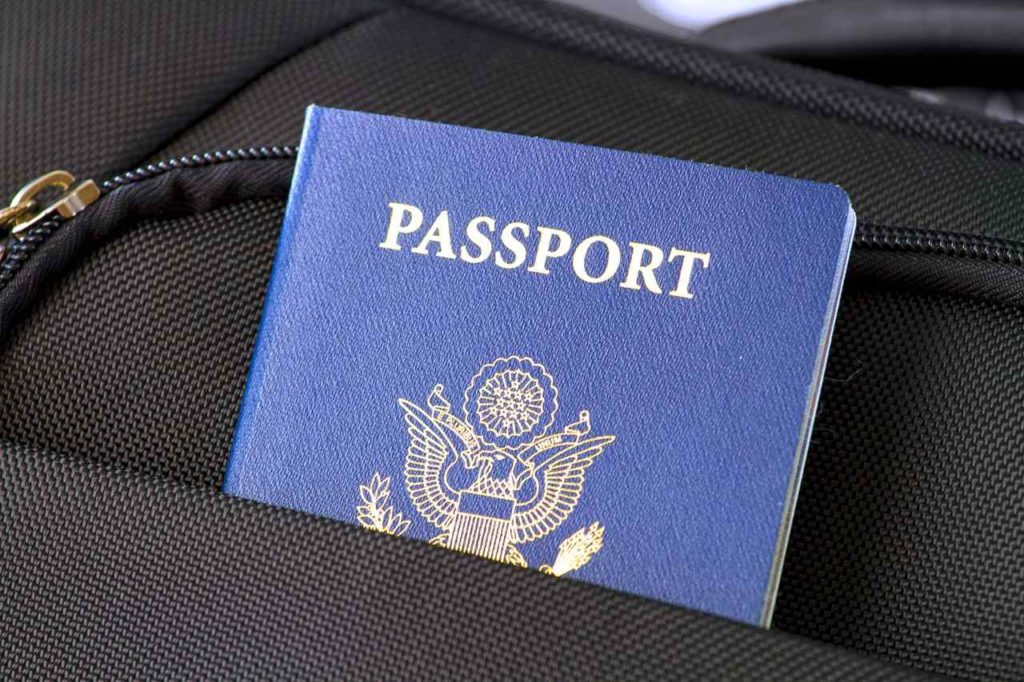
Passport inspections are mandatory when leaving or entering the EU
Equipment required for a European road trip with border crossings
Certain countries in Europe have rules about items you need to have inside your car in case of an emergency.
These may be checked during a Europe border crossing.
Items include
- High visibility jackets
- Hazard triangle
- Breathalyzer (Required in France)
- First aid kit
- Headlamp deflectors
You can purchase a European Road Kit on Amazon which covers everything you need.
Whilst we were on our massive road trip around Europe we also carried a road map just in case we had a problem with our satellite navigation.
Insurance required for a European road trip
First, check with your insurance provider to establish which European countries you are insured in.
When you complete a Europe border crossing by car your insurance will be checked.
I’ve written an entire article on how to find the cheapest car insurance including European cover.
There is a section in this article about what to do if your insurance policy does not cover you for a country you plan to enter.
Green card
This is a document that proves which foreign countries your insurance policy applies in.
You need to request a green card from your insurance provider to carry with you at all times.
Buying insurance at the border
If you are entering a country that you do not have insurance for then you will be required to buy insurance at the border.
This is nothing to worry about…
After you pass through passport control you will be asked to exit your vehicle and go to an office to purchase insurance.
Once you have insurance you will present it with the rest of your documents then proceed through customs across the border.
The cost of temporary insurance ranged from around $15 in Moldova to $70 in Turkey
Cash is king

As discussed above we always had to pay in cash for the temporary insurance.
Make sure you have cash with you for all border crossings!
Types of Border Crossing in Europe
Schengen Area
The first thing to understand is that in the Schengen Area you can cross borders with no restriction or hard border.
This area includes 26 European countries that allow the free unrestricted movement of people.
All of the EU countries except the UK and Ireland are in Schengen. Switzerland, Norway and Iceland are also in Schengen but not the EU.
Schengen Area Schengen Area Key
Borders within the EU by car
As stated above, many EU countries are in Schengen, meaning you will not cross a hard border and be engaged in border checks.
You can drive over the border with no problem at all!
However, the UK and Ireland are not and so you will cross a border entering there.
Entering or Leaving the EU by Car
Moving from EU to non-EU countries and vice versa, or entering/leaving the Schengen zone will require crossing a hard border.
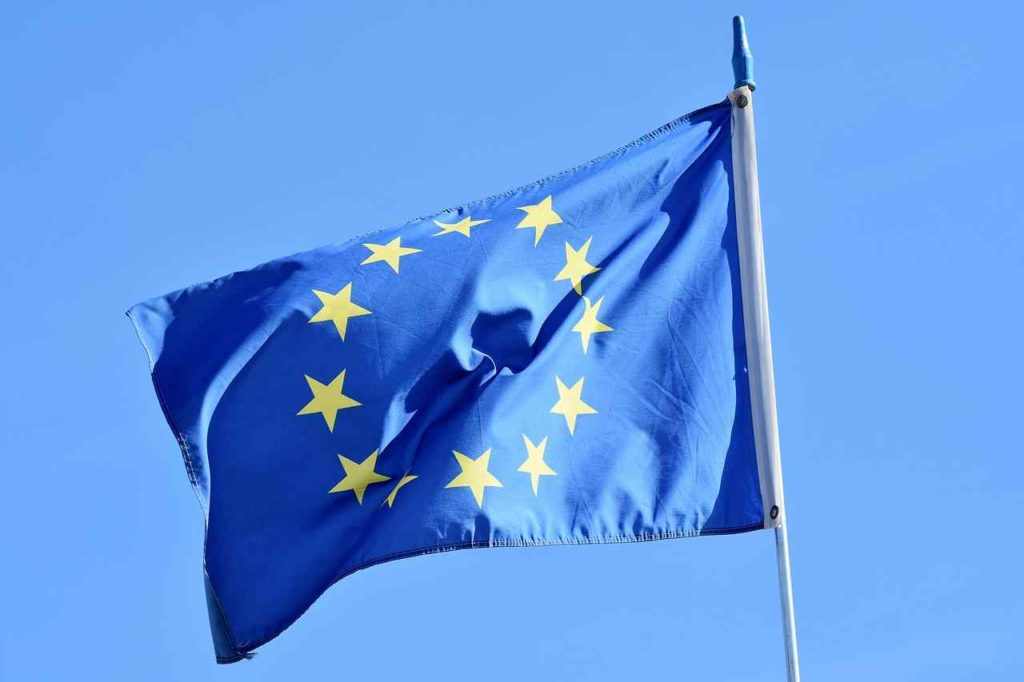
Toll Roads and Vignettes in Europe
Vignettes
A vignette is essentially a type of road tax which you pay in advance to use the toll roads of the country you are entering.
Countries that require a vignette
- Austria
- Bulgaria
- Czech Republic
- Hungary
- Romania
- Slovakia
- Slovenia
- Switzerland
- Portugal
You can purchase them at the following locations
- An office at the border
- gas stations
- car rental offices
- online (sometimes)
Toll Roads
Some countries have toll roads which are pay as you go.
Usually, you can use credit or debit card but I would always carry cash as a backup.
Always check what the situation is with toll roads or vignettes when you enter a country as the fines can be steep.
Things to Remember for a Europe Border Crossing
Generally speaking, you want to make life as easy as possible for the people at the border.
It’s a good idea to have a nice tidy car and ensure you have the following documents ready
Documents
- passports
- ownership documents
- Proof of insurance and green card
- Driving license
Make sure you drive slowly and follow commands at all times.
It’s really important to smile, especially if there is a language barrier and you have no idea what each other are saying!
Vehicle searches
During almost all border crossings we were required to open the boot of our car to allow a customs officer to view the contents.
In some circumstances, they would also ask a few questions regarding the contents of our luggage and complete a quick search of our bags and vehicle.
Corruption
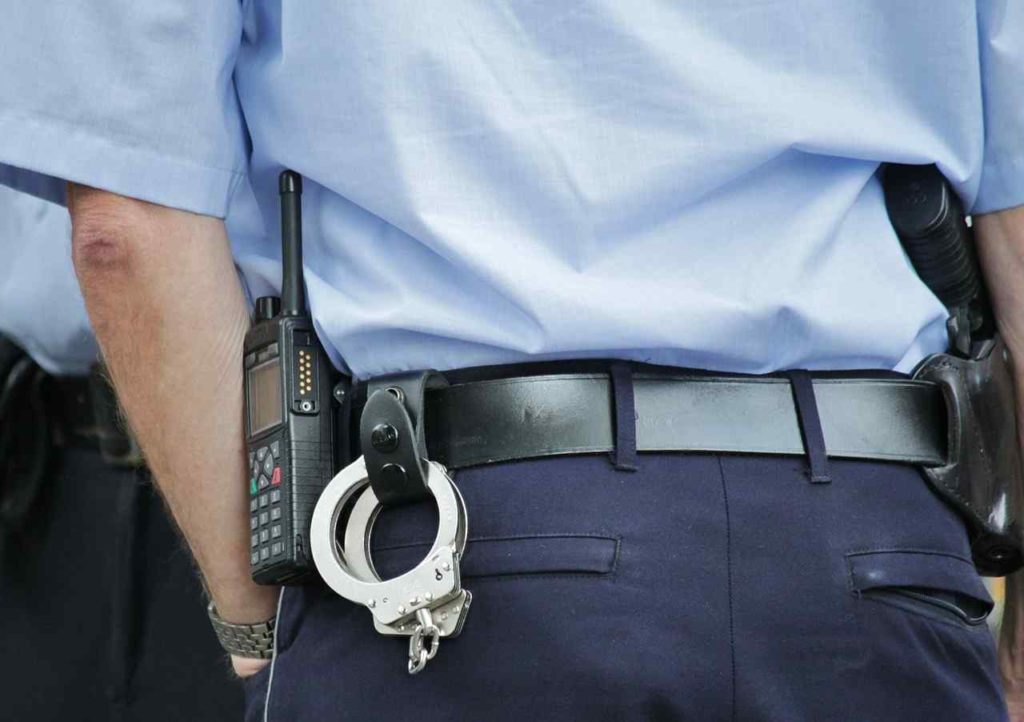
Unfortunately, I did encounter some corruption at certain border crossings in Europe.
It is nothing to be overly concerned about but there were some instances of officials charging us to enter or overcharging us for things like Visas and Insurance.
Sometimes we would pay in cash for something and then receive a receipt for a far lower amount.
Generally speaking, my advice is to carry small cash away from your main cash.
If you need to hand over a bit of spare cash the last thing you want to do is take out your wallet with hundreds of euros in it!
Extra Tips and Advice for a Europe Border Crossing by Car
Here are some final things to consider regarding European border crossings by car.
Fuel costs
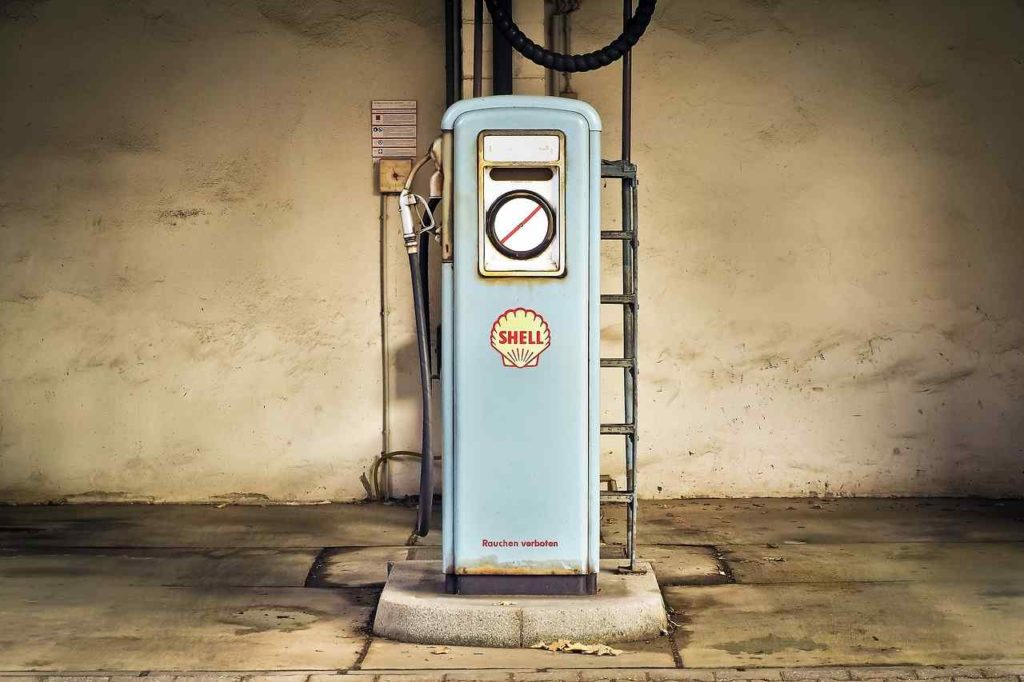
There can be drastic changes in fuel prices across borders.
Always plan around this and if you are leaving a cheap country make sure you fill up the tank with fuel before crossing the border.
New road signs
Take your time when entering a new country to familiarise yourself with the new road signs.
Speed limit changes
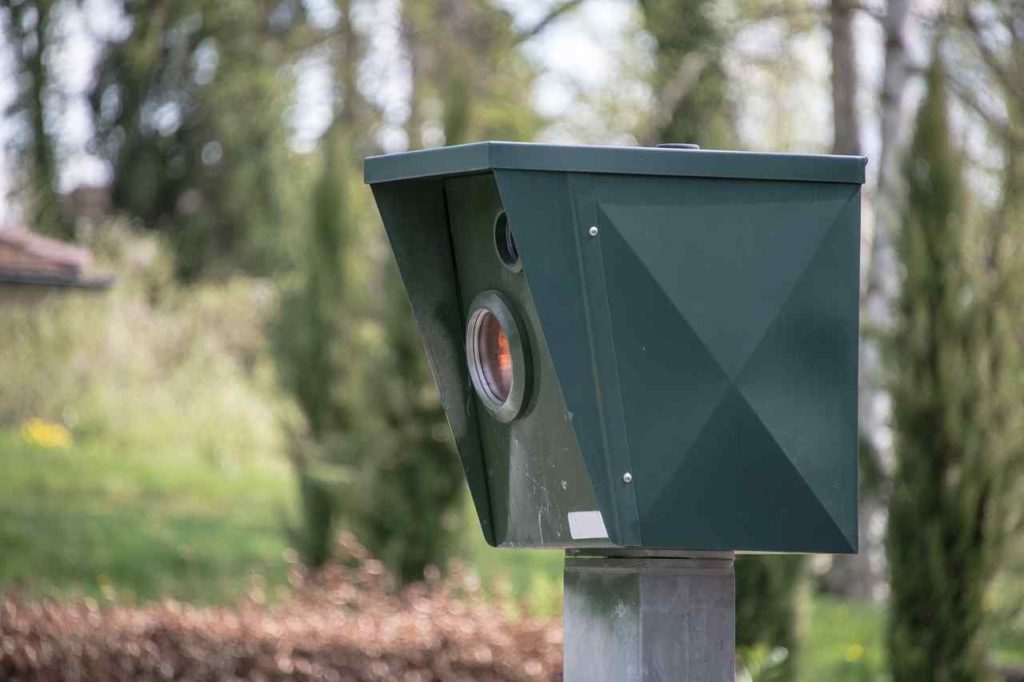
When you cross over the border into a new country there is almost always a large sign which outlines the speed limits on each type of road.
An excellent app is Waze for driving around Europe because it has a built-in function that tells you if you are speeding.
This is very helpful if you are crossing borders and the limit is constantly changing.
Europe Border Crossing by Car Summary
The main items required for a border crossing are passports, vehicle registration documents, proof of insurance and green card.
Always take cash, it is often needed to purchase vignettes or insurance at the border in case your policy does not cover the country you are entering.
There are free border movements in Schengen but all other borders will have checks.
Smile, drive slowly and follow commands regarding vehicle searches and document presentation.
More from the Road Trip Expert
Crossing the border by car in Europe requires planning and preparation.
You should factor it in when you are planning a road trip around Europe.
Whilst planning its also great to consider road trip entertainment as well as saving money on parking.
Have you had a different experience during a European border crossing by car?
Let us know in the comments so I can add it to this article.
Disclosure: Some of the links in this article may be affiliate links. This means I earn a commission if you make a qualifying purchase, but this is at no additional cost to you. Thank you for supporting The Road Trip Expert.
This Is Europe’s Ultimate Road Trip
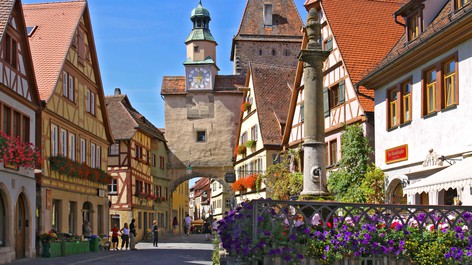
A journey along the Romantic Road, stretching between Würzburg and Füssen in Bavaria, is Europe’s ultimate road trip. Culture Trip has a complete itinerary for you, including the best time to visit, how to get there and what to see.
The 400km (249mi) Romantic Road, known for its alpine views, chocolate box villages and medieval splendour, was introduced in the 1950s to boost tourism after the war. It now links the walled towns of Rothenburg ob der Tauber, Dinkelsbühl and Nördlingen with the cities of Würzburg and Augsburg and the Alps in the south. Driving it takes just a couple of days – but it would be a mistake to whizz past the fairy-tale towns, wild rivers and imposing castles you’ll see on the way. Linger longer and enjoy the journey instead: it’s even possible to cycle or walk the route, if you have more time and energy. There are several cycle paths away from the main road, the route is largely flat and a bike map is available from nearby tourist offices.

It’s even possible to cycle the route; here, cyclists are passing Bannwaldsee lake | © Realimage / Alamy Stock Photo
How to get there
Choose the direction you want to travel before you book. Frankfurt airport is convenient for starting the journey in Würzburg and travelling south, as most people choose to do. This way, it’s possible to add on days for hiking or skiing in the Alps. Munich is better if you’d like to travel from Füssen and head north to Würzburg. It’s very easy to hire a car at either airport, although there are plenty of locations in Würzburg and Füssen themselves where you can also arrange a rental. It’s even possible to travel the road by public transport – there is no direct train, but a bus service runs in both directions along the route.

Begin at Munich if you’d like to head towards the quaint town of Würzburg | © Peter Adams Photography / Alamy Stock Photo
When to go
The summer months are the most popular for travelling the Romantic Road – particularly if you’re cycling – because you can enjoy the long, light evenings, al fresco dining and outdoor festivals and markets. However, this is also the region’s busiest time, and the castles and the narrow cobbled streets of the towns will be crowded. Try to visit in spring or autumn instead, to escape the masses and make the most of the region’s vineyards, which hold weekend wine festivals from as early as April until the harvest in late autumn. These offer tastings of new vintages, temporary taverns, entertainment and firework displays.

The route is also magical in winter, when it is lined with snow-capped forests, cosy candlelit pubs and Germany’s famous Christmas markets. These fairy-lit winter wonderlands are held throughout December in Rothenburg ob der Tauber, Dinkelsbühl, Würzburg, Augsburg and Nördlingen, selling local handicrafts, traditional food and warming Gluhwein (mulled wine). Snow is possible as late as March, so be sure to double-check that your hire car comes with winter tyres to be on the safe side.

If your timing’s right, you can check out Nördlingen Christmas market | © Ernst Wrba / Alamy Stock Photo
Where to stay
Slow down and enjoy the journey by staying in any of the chic luxury hotels, cosy guest houses and family-friendly campsites, packed with facilities, along the way.
One of the best is the Campsite Romantische Strasse, which offers fully equipped mobile homes and tent pitches plus a restaurant, indoor pool, minigolf and a bathing lake with a water playground. Kids will also love Lech Camping close to Augsburg, with its private lake, free boats and table tennis. Elegant Hotel Das Rübezhal near Füssen is a worthy final splurge for its open fires, expansive spa and heated outdoor pool overlooking the Alps and Neuschwanstein Castle.

What to see
Cruise past pine trees, dappled lakes and hillside vineyards from Würzburg to Rothenburg ob der Tauber – a walled medieval town of flower-filled window boxes, cobblestone alleyways and painted houses straight from a storybook. Guided tours are offered from the market square to the fascinating Alt-Rothenburger Handwerkerhaus, where artisan craftspeople worked for over 700 years.
Head onwards to Dinkelsbühl, with its higgledy-piggledy half-timbered houses, city gates and fortified towers. On the way to Bavaria’s oldest city of Augsburg, it’s worth a quick stop in Nördlingen, located in the crater of a meteorite impact from 15 million years ago. More recently, it was used as a backdrop in the 1971 film Willy Wonka & the Chocolate Factory.
Other unmissable sights along the way include the astonishingly well preserved 11th-century Harburg Castle, one of the most intact castles in Germany, plus the medieval gates in riverside Donauwörth.

Further south, stop at the ornate rococo church in Pfaffenwinkel before admiring the spires and turrets of King Ludwig II’s 19th-century hilltop Neuschwanstein Castle, which overlooks the Bavarian Alps. This extraordinary sight is the most-visited castle in Germany and the inspiration for Disney’s Sleeping Beauty palace. Don’t hurry on to the sorbet-coloured Old Town in Füssen until after sunset so that you can capture the castle as its most bewitching – it could well be the most romantic sight of all on this unforgettable road trip.

Since you are here, we would like to share our vision for the future of travel – and the direction Culture Trip is moving in.
Culture Trip launched in 2011 with a simple yet passionate mission: to inspire people to go beyond their boundaries and experience what makes a place, its people and its culture special and meaningful — and this is still in our DNA today. We are proud that, for more than a decade, millions like you have trusted our award-winning recommendations by people who deeply understand what makes certain places and communities so special.
Increasingly we believe the world needs more meaningful, real-life connections between curious travellers keen to explore the world in a more responsible way. That is why we have intensively curated a collection of premium small-group trips as an invitation to meet and connect with new, like-minded people for once-in-a-lifetime experiences in three categories: Epic Trips, Mini Trips and Sailing Trips. Our Trips are suitable for both solo travellers and friends who want to explore the world together.
Epic Trips are deeply immersive 8 to 16 days itineraries, that combine authentic local experiences, exciting activities and enough down time to really relax and soak it all in. Our Mini Trips are small and mighty – they squeeze all the excitement and authenticity of our longer Epic Trips into a manageable 3-5 day window. Our Sailing Trips invite you to spend a week experiencing the best of the sea and land in the Caribbean and the Mediterranean.
We know that many of you worry about the environmental impact of travel and are looking for ways of expanding horizons in ways that do minimal harm – and may even bring benefits. We are committed to go as far as possible in curating our trips with care for the planet. That is why all of our trips are flightless in destination, fully carbon offset – and we have ambitious plans to be net zero in the very near future.
Cookies Policy
We and our partners use cookies to better understand your needs, improve performance and provide you with personalised content and advertisements. To allow us to provide a better and more tailored experience please click “OK”
Source https://crockersfolly.com/how-long-does-it-take-to-travel-through-europe/
Source https://www.theroadtripexpert.com/europe-border-crossing-by-car/
Source https://theculturetrip.com/europe/articles/this-map-shows-the-quickest-and-ultimate-road-trip-across-europe/